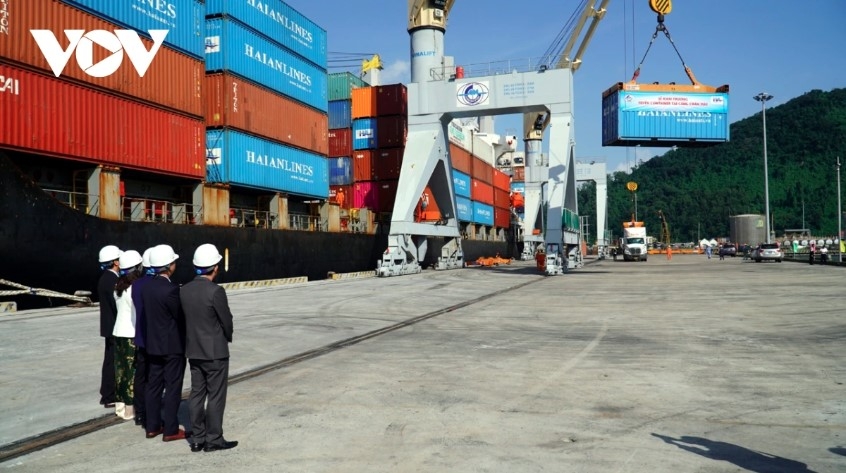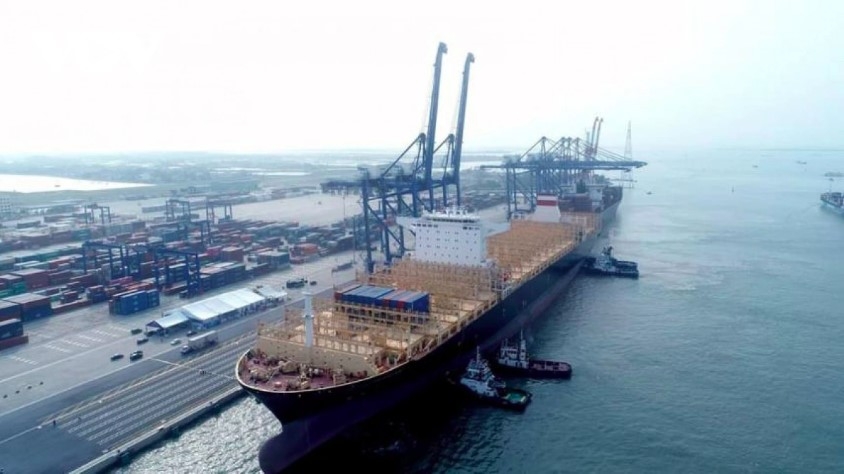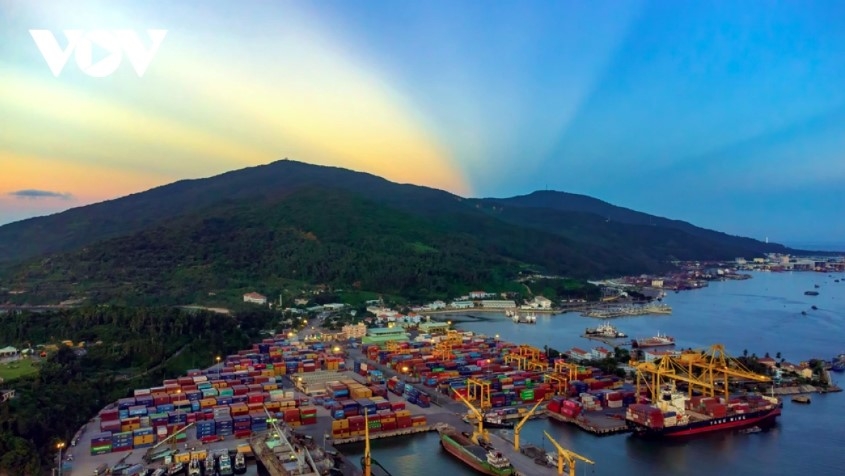Green port development to sharpen Vietnamese enterprises’ competitiveness
VOV.VN - With its advantages in port infrastructure, Vietnam’s maritime industry continues to invest in and develop a sustainable, 'green' port system, enhancing seamless connectivity with regional and global networks while boosting the value of imports and exports.

The International Maritime Organization has set a target of reducing greenhouse gas emissions to net zero by 2050, and Vietnam is no exception. Transitioning to a green port model is an essential requirement and a prerequisite for the nation’s maritime sector to remain competitive and integrate effectively into the global market.
The green port development plan is divided into several phases, with the 2023-2025 period being the most critical. During this time, regulations related to port management, investment, and construction will be adjusted to align with green port criteria.
By 2025, greater efforts are required to finalize these standards. Alongside port system development, port enterprises must accelerate digital transformation and apply advanced technologies to enhance connectivity in transport activities, a crucial factor in driving Vietnam’s maritime economy.
“In terms of infrastructure breakthroughs, our company continues to focus on deep-water port projects, with the largest investment directed at developing the Can Gio International Transshipment Port. Early implementation of such projects will elevate Vietnam’s maritime competitiveness to an international and regional level. Additionally, we are moving forward with the completion of berths 3 and 4 at Lach Huyen Port and the development of deep-water ports like Lien Chieu in Da Nang,” analyzed Nguyen Canh Tinh, General Director of the Vietnam Maritime Corporation (VIMC).
According to statistics from the Vietnam Maritime Administration, cargo throughput at Vietnamese ports has maintained double-digit annual growth, indicating strong performance. The growing investment in ports and maritime infrastructure provides Vietnam with an opportunity to become a major transshipment hub. To align with global trends, Vietnam must adopt a development strategy that ensures sustainability and environmental responsibility.

Pham Hoai Chung, Chairman of the Board of Members at the Shipbuilding Industry Corporation (SBIC), emphasized that this is a highly sustainable competitive trend that drives growth for maritime enterprises. “The Prime Minister has introduced policies for green port development. This will attract investment in a modern, sustainable port system. Once Vietnam establishes a well-developed port network and reduces logistics costs, the competitiveness of domestic enterprises in the global market will increase,” Chung remarked.
Currently, approximately 70% of newly built cargo ships worldwide are using green fuels, necessitating the rapid adoption of sustainable solutions at Vietnamese ports. Da Nang Port, for instance, has set a 2025 target to expand and solidify its port system by integrating science and technology, fostering innovation, and continuously upgrading infrastructure to improve port operations and logistics services.
“Da Nang Port pledges to further digitalization to boost capacity, cut costs, and optimize services for customers. We have already implemented a semi-automated process, allowing customers to finalize procedures remotely, making operations more efficient for businesses,” said Tran Le Tuan, General Director of Da Nang Port.

Investing in port infrastructure to accommodate larger vessels will sharpen the competitive edge. For example, in Ba Ria - Vung Tau, opening a connecting gate between Tan Cang - Cai Mep Thi Vai Terminal (TCTT) and Cai Mep International Terminal (CMIT) will optimize port operations. The joint venture in shared berth utilization between these two ports is seen as a pioneering initiative to maximize Vietnam’s port infrastructure efficiency. This collaboration aims to leverage an integrated port system, creating a continuous quay with greater length, thereby increasing operational capacity and vessel handling capabilities.
“Cai Mep - Thi Vai is a deep-water port cluster and a key gateway for the Southern Economic Zone. Its rapid growth has been remarkable. Without additional investments in new berths, achieving an extra 400,000 TEU per year is a breakthrough and a success for the port sector,” compared Nguyen Xuan Ky, General Director of Cai Mep International Terminal (CMIT).
Discussing the trend toward sustainable green port development amid global competition, Dr. Hoang Hiep, Deputy General Director of Portcoast Consultant Corporation, stated that digital transformation plays a key role in green port initiatives.
"To sharpen competitiveness, collaboration among port enterprises, including Portcoast, must be further advanced through the comprehensive adoption of digital applications."
Experts and industry leaders agree that investing in green port infrastructure will unlock a wealth of opportunities for collaboration, allowing Vietnamese ports to accommodate mega-container ships. This will create new momentum for dynamic and efficient port development, leading to substantial revenue growth for port operators. Ultimately, it will solidify Vietnam’s position in the regional port sector and enhance the competitiveness of Vietnamese enterprises within the global logistics service chain.


